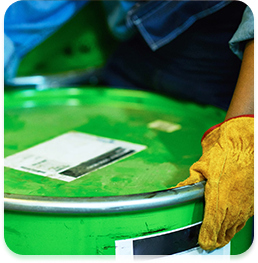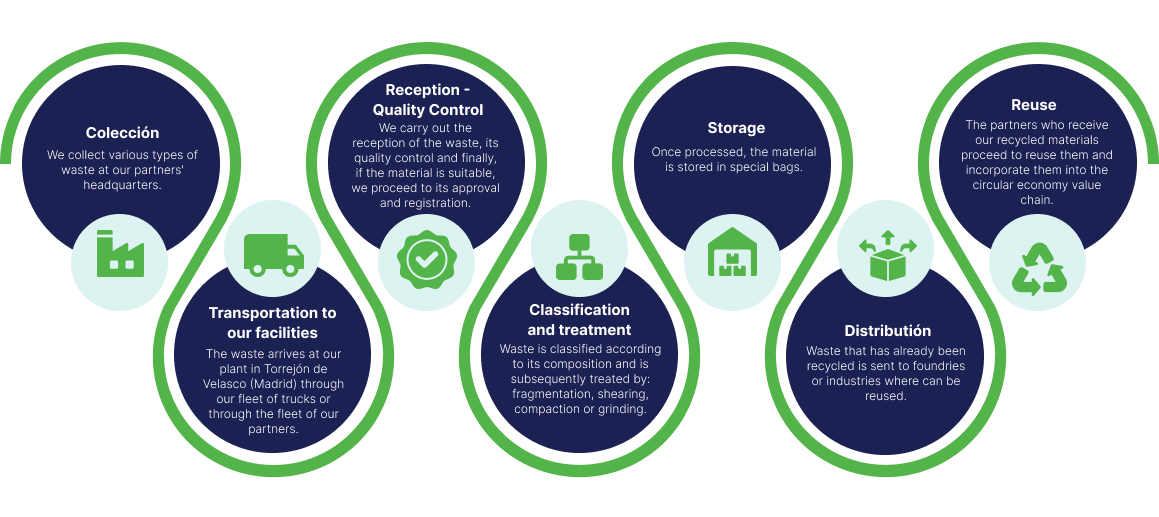Comprehensive
Waste
Management
Comprehensive waste management is understood to be the aspects related to the
generation, separation, and treatment at the source of origin of the waste, as well as
its collection, transfer and transport, treatment, recycling and
final disposal of the waste by authorized entities.
Our goal, applying circular economy criteria, is to transform
different types of waste into reusable and valuable resources, contributing
to the sustainability of the environment and reducing the extraction of raw materials.
WEEE (Waste Electrical and Electronic Equipment) .
The first step in the management of WEEE is its transfer to specialized plants of authorized entities and here it is received and approved.
Subsequently, all polluting elements are removed and usable elements (plastic, aluminum, copper, glass, other metals, etc.) are processed into raw materials to manufacture new products. In this case, the process is relatively simple compared to other recycling processes, since most of the components of WEEE can be separated by mechanical processes and up to 70% of them can be recovered, reaching in some cases, such as mobile phones, more than 90%.
These recovered materials are put back on the market as a basis for new electrical or electronic equipment, saving the use of raw materials from nature and in line with the concept of Circular Economy. The proportion of each of them will depend on the type of waste we treat.
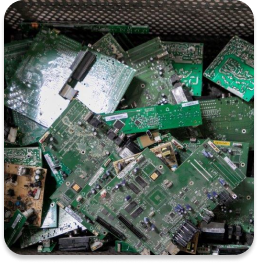
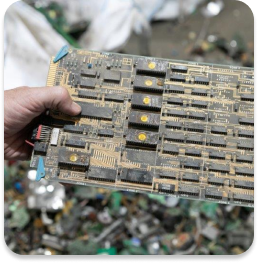
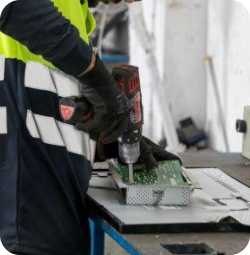
HAZARDOUS
Hazardous waste is that which constitutes a risk to our health or to the environment and which has been classified as hazardous waste by the different competent entities.
Hazardous waste treatment is a critical process to protect the environment and human health. There are several ways to treat this waste, including incineration, chemical stabilization, safe storage, and final disposal in purpose-built facilities.
